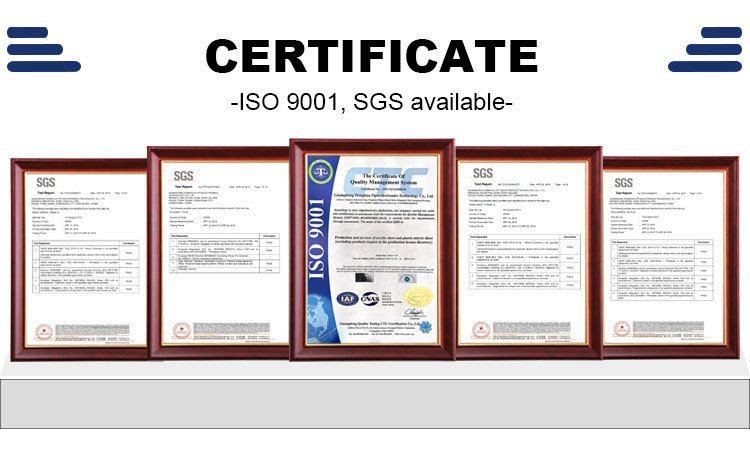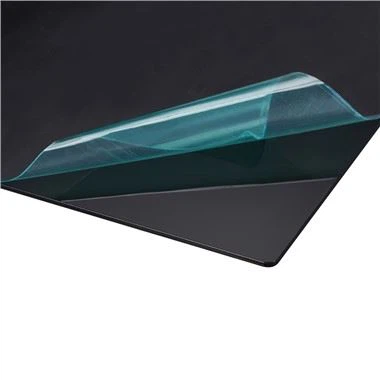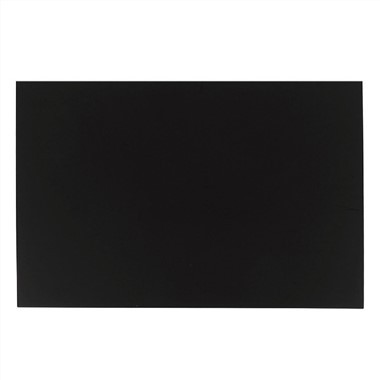
Abrasion Resistant Acrylic Sheets
Abrasion Resistant Acrylic Sheet is stronger than glass but weighs half as much as glass, it is a continuously manufactured acrylic sheet which was covered with clear abrasion resistant coating on one (AR1) or both (AR2) sides, gives it high impact strength with abrasion and chemical resistant with non-glare properties for easy viewing, offering 40 times greater resistance to marring and chemical attack than uncoated acrylic sheet.
Description
What is Abrasion Resistant Acrylic Sheets
Abrasion resistant acrylic sheets are engineered to possess exceptional durability against physical wear and tear. They are made using advanced manufacturing techniques and materials that impart superior hardness and resistance to scratches, impacts, and other forms of abrasion. These sheets are constructed from polymethyl methacrylate (PMMA)-a synthetic polymer widely recognized for its transparency and lightweight properties-with modifications that enhance its performance under abrasive conditions.
why choose us
Experience
We have years of experience producing high-quality acrylic sheets for businesses around the world.
Expertise
We have a team of experienced professionals who ensure that all our products meet superior quality standards.
State-of-the-art technology
Our state-of-the-art technology ensures that all our products are of the highest quality, providing reliability and durability for years to come.
Competitive Prices
We offer competitive prices that are affordable for businesses of all sizes.
Benefits of Abrasion Resistant Acrylic Sheets
Durability
Our Abrasion Resistant Acrylic Sheets have excellent resistance to scratches and abrasions, which makes them perfect for high-traffic areas. Whether you're using them for lenses, signs, displays, or covers, our sheets will remain scratch-free for years to come.
01
Flexible and Lightweight
Our Abrasion Resistant Acrylic Sheets are lightweight and flexible, making them an ideal material for applications where weight is a factor. They are easy to handle and install, reducing labor costs and time.
02
UV Resistance
Our sheets are incredibly resistant to UV radiation, making them perfect for outdoor and indoor applications. They will not yellow or deteriorate, ensuring longevity and durability in even the harshest environments.
03
Customizable
Our Abrasion Resistant Acrylic Sheets are easy to customize to meet your specifications. We can cut, form, and fabricate them to any shape or size, giving you unlimited options for your business needs.
04
Cost-effective
Our Abrasion Resistant Acrylic Sheets are cost-effective, making them an outstanding choice for businesses on a budget. They offer all the durability and features of more expensive materials, but at a fraction of the cost.
05
Types of Abrasion Resistant Acrylic Sheets

Standard Acrylic with Additives
Regular PMMA acrylic can be modified by adding special compounds that enhance its abrasion resistance. These additives can be mixed into the acrylic before it is cast or extruded, providing a slight improvement in durability over standard acrylic.

Cast Acrylic Sheets with Scratch-Resistant Coatings
These are made by casting PMMA and then applying a scratch-resistant layer on the surface. The coating acts as a barrier against abrasive forces, protecting the underlying material. These sheets are highly transparent and have excellent surface hardness.

Polycarbonate/Acrylic Blends
Polycarbonate (PC) offers superior impact resistance, and when combined with acrylic, it creates a composite material that has improved scratch resistance and toughness. These blends are particularly useful in environments where both impact and abrasion are concerns.

UHMWPE (Ultra-High Molecular Weight Polyethylene) Composite Sheets
UHMWPE is known for its extreme abrasion resistance, and when it is laminated onto an acrylic core, the resulting composite sheet is exceptionally durable and resistant to wear.

Modified Acrylic Sheets with Silica or Alumina Particles
Some manufacturers enhance the abrasion resistance of acrylic by incorporating microscopic silica or alumina particles into the material. These hard particles increase the surface hardness of the acrylic, making it less susceptible to scratches and marring.

Impact Modified Acrylic Sheets
While primarily designed to improve impact resistance, these sheets also tend to have better abrasion resistance due to the presence of rubbery impact modifiers that absorb and dissipate force.
How to Choose Abrasion Resistant Acrylic Sheets
Optical Properties: Consider the optical property of the acrylic sheet. Acrylic sheet properties make it an exceptionally clear material, with a light transmission rate of 92%. It also has a high refractive index, meaning that it bends light more than glass does. This is perfect for different visual effects.
Stability and Deformation: Acrylic sheets are quite stable as they retain shape and dimensions well over long periods of time. Moreover, they are very stiff and have a high resistance to deformation under load. This makes it ideal to use acrylic sheets for projects where dimensional stability makes a difference.
Weather Resistance: Another key factor to note when selecting an acrylic sheet is its weather resistance. While it's an extremely durable material, it is still susceptible to UV exposure and extreme temperatures. For outdoor applications, we recommend choosing acrylic sheets that have been specifically designed for weather resistance.
Chemical Resistance: If the sheets are likely to be exposed to various chemicals or cleaning agents, you might want to check their chemical resistance. While acrylic sheet properties against chemicals are good, some types are more resistant than others. You can always have a chat with our experts to help you choose the appropriate one based on the desired application.
Working Temperature: Acrylic sheets have a relatively low melting point compared to other materials. This is very important if your project involves high-temperature processes like thermoforming or laser cutting. Exceeding the working temperature of acrylic sheets can lead to deformation, warping, or even melting. Understanding the temperature limitations of the chosen acrylic sheet type is key to achieving the desired outcome.
Processability: Processability refers to how easily a material can be fabricated, shaped, and customised to suit your project needs. Acrylic sheets can be cut, drilled, engraved, and even bent with the right equipment and techniques. This is another point you might want to keep in mind. Though thicker sheets are challenging to work, they tend to offer greater structural integrity. Meanwhile, thinner sheets are easier to manipulate but possess lower strength and durability.
The Primary Methods to Enhance the Abrasion Resistance of Abrasion Resistant Acrylic Sheets Include
Surface Hardening Coatings
Application of coatings that contain hard resins or ceramic materials creates a protective layer, significantly boosting the sheet's resistance to abrasive substances and mechanical actions.
Chemical Additives
Incorporating certain chemical additives into the polymer blend can lead to increased cross-linking between the polymer chains. This results in a more interconnected molecular structure that is less prone to damage from abrasive forces.


Particle Reinforcement
Microscopic particles such as aluminum oxide, silicon carbide, or glass are embedded within the acrylic matrix. These particles act as abrasion-resistant barriers, protecting the underlying material from wear.
UV Stabilizers
UV stabilizers are added to prevent degradation caused by exposure to ultraviolet radiation, which can weaken the material and reduce its abrasion resistance over time.
Acrylic plate manufacturing process
Lorem ipsum dolor sit, amet consectetur adipisicing elit.
Polymerization: The first step in creating acrylic, also known as polymethyl methacrylate (PMMA), is through a polymerization reaction. Monomers, such as methyl methacrylate, are combined and catalyzed to form long chains of polymer. This can be done through bulk, suspension, or emulsion polymerization methods.
Purification: Once polymerized, the material may contain impurities that need to be removed to ensure the quality of the final product. Purification processes may include filtration, washing, and drying to achieve the desired purity level.
Casting or Extrusion: Casting.This method involves pouring the liquid PMMA into a mold, where it is left to cure and solidify at room temperature or under controlled heating. After curing, the acrylic is removed from the mold and subjected to further processing to achieve the necessary thickness and dimensions.Extrusion: In this process, PMMA is fed into an extruder where it is melted and forced through a die to create a continuous sheet of uniform thickness. The extruded sheet is then cooled and cut to the desired size.
Heat Treatment: To improve the mechanical properties and dimensional stability of the acrylic, heat treatment may be applied. This can involve annealing, where the material is slowly heated and cooled to relieve internal stresses.
Finishing: The acrylic plate undergoes various finishing processes to enhance its appearance and surface quality. These may include sanding, grinding, and polishing to achieve a smooth, glossy finish. Edge treatments such as beveling or chamfering can also be performed at this stage.
Quality Control: Throughout the manufacturing process, quality control measures are employed to ensure that the acrylic plates meet specified standards. This includes testing for optical clarity, dimensional accuracy, and mechanical strength.
Cutting and Machining: Depending on the end-use requirement, the acrylic plates may be cut and machined into various shapes and sizes using saws, laser cutting, or CNC machines. This allows for customization according to specific project needs.
Secondary Processing: Additional secondary processes such as drilling holes, adding adhesive layers, or applying decorative coatings might be required to complete the manufacturing process.
How to Maintain Abrasion Resistant Acrylic Sheets
Cleaning
Wipe down the acrylic surfaces regularly with a soft, lint-free cloth.Use a mild soap solution and warm water for general cleaning. Avoid using harsh chemicals, abrasive cleaners, or scouring pads as they can scratch the surface.Rinse the sheet thoroughly after cleaning to remove all soap residues.


Storage
Store acrylic sheets flat or on edge to prevent sagging or distortion. If stacking, separate each sheet with a protective layer of paper or cardboard.Keep storage areas clean, dry, and free from dust. Humidity should be controlled to prevent condensation, which can damage acrylic.
Handling
Always handle acrylic sheets with care. Support them evenly to prevent bending or warping.Wear cotton gloves or clean, soft fabric gloves to prevent fingerprints and oils from transferring onto the sheet.When lifting or moving the sheets, use suction cups or other suitable devices designed for acrylic materials to avoid direct contact.


Protective Measures
Apply a clear, UV-resistant coating to the surface of the acrylic sheet to protect it from sun exposure and yellowing.Use protective films or covers during transportation and handling to guard against scratches and abrasions.In environments where the acrylic may come into contact with chemicals or solvents, use shielding or barriers to prevent chemical attack.
Repairing Minor Scratches
For minor scratches, polish the affected area with a polishing compound specifically designed for acrylic. Follow the manufacturer's instructions for the best results.Gently buff the area with a soft cloth until the scratch is no longer visible.


Regular Inspection
Regularly inspect the acrylic sheets for signs of wear, cracks, or damage. Early detection of issues allows for prompt repair or replacement, preventing further deterioration.
What are the Applications of Abrasion Resistant Acrylic Sheets
An acrylic splashback is a quick and achievable update for any kitchen. And because there's a massive range of colours and finishes, the final splashback can be sleek and sophisticated, glossy, or wildly creative.We can cut acrylic sheets to any size to fit even the most unconventional spaces for a bespoke finish. Once installed, a plastic sheet splashback is extremely low maintenance, being easy to clean and resistant to scratching and staining - perfect for everyday use.
Traditionally, greenhouses are manufactured from glass. But if you want to grow fruit and vegetables on a commercial scale, it's worth considering using acrylic plastic panelling for your greenhouses.There are several reasons to consider using acrylics like Plexiglass. First, this material is up to 50% lighter than glass sheets and 17 times more robust. It's a tough and durable material that can withstand all weather conditions. And it won't shatter when struck, making it much safer for your workforce.
Ever wonder how stores achieve those effortless floating retail displays? A clear acrylic sheet is a cost-effective way to create captivating layouts that show off any product in a modern, minimalist style. Acrylic display stands are a cost-effective way to achieve incredible effects. Plastic sheet options are available in different colours to reflect your branding and won't shatter or scratch with extended use. In addition, acrylic sheets come in an extensive range of thicknesses and sizes, making them the perfect material for developing creative and eye-catching displays that reinforce your brand.
Sleek and modern furniture moulded from acrylic sheets has a cool and contemporary vibe. Because of the versatility of acrylic sheets, designs can be classic and traditional or quirky and daring.For example, a shatterproof clear acrylic like Crylux sheet is a perfect replacement for a glass tabletop, especially in a family home. And unlike wooden furniture, lightweight acrylic office furniture is much better at handling stains, spills and general wear and tear.
The combination of strength and transparency makes a clear acrylic sheet the ideal choice for an aquarium. Whether you need large scale tanks or a feature for a hotel lobby, acrylic is the obvious and affordable choice. In addition, it's not a safety risk for people or sea life because it doesn't smash and shatter like glass can.
How to Improve The Impact Resistance of Acrylic Sheets?
Choose high-quality acrylic materials
It is important to choose acrylic materials with high impact resistance. Generally speaking, high-quality acrylic board materials have higher molecular weight and better molecular structure, which can effectively resist external impact.
01
Increase the thickness of the sheet
Increasing the thickness of the acrylic sheet can improve its impact resistance. Thicker plates can better disperse external forces and reduce breakage and deformation caused by impacts.
02
Strengthening the surface treatment of the plate
By treating the surface of the acrylic plate, the hardness and wear resistance of the surface can be increased, thereby improving the impact resistance. For example, coating, spraying or thermal transfer techniques can be used to add a protective layer to the surface.
03
Reasonable design of structure
When designing acrylic products, its structure can be reasonably designed to enhance its impact resistance. For example, adding supports or reinforcing structures to impact-prone areas can disperse impact forces and reduce the risk of breakage.
04
Control environmental factors
The impact resistance of acrylic panels is also affected by environmental factors. Therefore, during use, try to avoid exposure to harmful environments such as prolonged sunlight, extreme temperatures, or moisture to maintain stable performance.
05
Our Factory
With several 1000000 square meters factories, we can easily reach large demanding request from our clients, our never ending research and development has lead to tremendous quality increase in our products. We also offer free sample service, whatever you need, just tell us the required data and we'll make your illusory concept in mind from sketches or CAD blueprints to real product as soon as possible.



FAQ
Q: What is abrasion resistant acrylic?
Q: What are the pros and cons of acrylic?
Q: How can you tell if its polycarbonate or acrylic?
Q: Why are acrylic sheets so expensive?
Q: Can you use acrylic sheets outside?
Q: Is there acrylic that doesn't scratch?
Q: How do you make acrylic sheets scratch resistant?
Q: Which is more scratch resistant acrylic or polycarbonate?
Q: What material has the best abrasion resistance?
Q: What does it mean abrasion resistant?
Q: Does acrylic sheet scratch easily?
Q: Can acrylic be easily scratched?
Q: Which is better acrylic sheet or polycarbonate sheet?
Q: How do you cut acrylic sheets without cracking them?
Q: Which is more scratch resistant plexiglass or acrylic?
Q: How do you improve abrasion resistance?
Q: What are the three types of abrasion?
Q: What is acrylic sheeting not good for?
Q: Is polyester abrasion resistant?
Q: Which is more scratch resistant acrylic or polycarbonate?
Hot Tags: abrasion resistant acrylic sheets, China abrasion resistant acrylic sheets manufacturers, suppliers, factory, acrylic mirror hexagon, glitter acrylic sheets for laser cutting, UV plexiglass sheet, silver perspex mirror, panel acrylic, mirror sheets
















